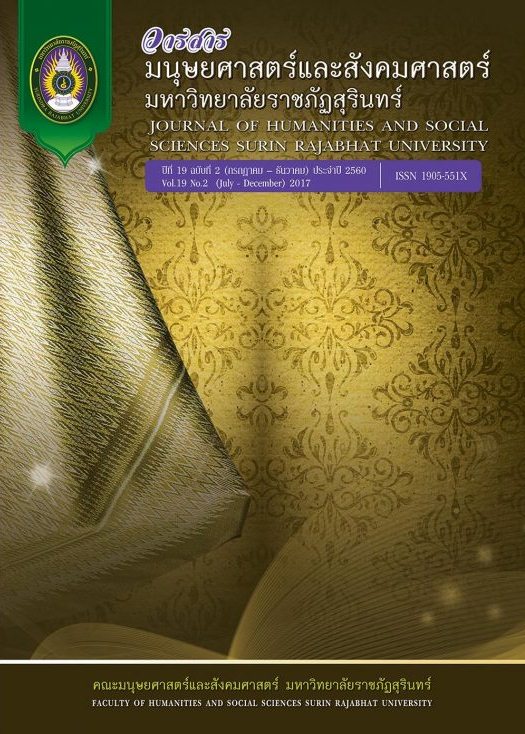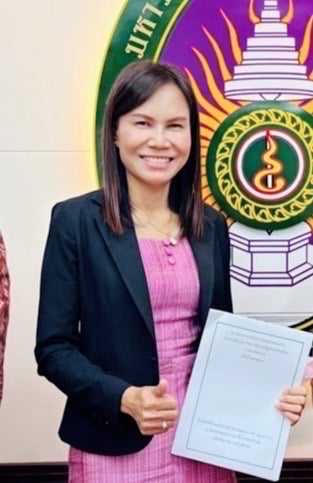การสร้างแบบทดสอบวัดผลสัมฤทธิ์ทางการเรียนรายวิชาวิทยาศาสตร์ สำหรับชั้นมัธยมศึกษาปีที่ 1 ตามแนวข้อสอบในโครงการประเมินผลนักเรียนร่วมกับนานาชาติ (PISA)
บทคัดย่อ
การวิจัยครั้งนี้มีวัตถุประสงค์เพื่อพัฒนาแบบทดสอบวัดผลสัมฤทธิ์ทางการเรียนรายวิชาวิทยาศาสตร์ สำหรับชั้นมัธยมศึกษาปีที่ 1 และตรวจสอบคุณภาพของแบบทดสอบวัดผลสัมฤทธิ์ทางการเรียนรายวิชาวิทยาศาสตร์ ชั้นมัธยมศึกษาปีที่ 1 ตามแนวโครงการประเมินผลนักเรียนร่วมกับนานาชาติ (PISA) กลุ่มตัวอย่างประกอบด้วย นักเรียนชั้นมัธยมศึกษาปีที่ 1 ปีการศึกษา 2558 สหวิทยาเขตราชนครินทร์ สังกัดสำนักงานเขตพื้นที่การศึกษามัธยมศึกษาเขต 2 กรุงเทพมหานคร จำนวน 366 คน
ผลการวิจัยพบว่า
- ความเที่ยงตรงเชิงเนื้อหาของแบบทดสอบวัดผลสัมฤทธิ์ทางการเรียนรายวิชาวิทยาศาสตร์ สำหรับชั้นมัธยมศึกษาปีที่ 1 ตามแนวข้อสอบในโครงการประเมินผลนักเรียนร่วมกับนานาชาติ (PISA) ครั้งที่ 1 มีค่าความสอดคล้องทั้งฉบับตั้งแต่ 0.40 ถึง 1.00 โดยผู้วิจัยได้นำข้อคำถามไปปรับปรุงแก้ไขตามคำแนะนำของผู้เชี่ยวชาญ จากนั้นจึงนำมาหาค่าดัชนีความสอดคล้อง ครั้งที่ 2 มีค่าความเที่ยงตรงเชิงเนื้อหา 0.60 ถึง 1.00 ซึ่งสอดคล้องตามเกณฑ์ที่กำหนด
- ค่าความยากง่ายของแบบทดสอบวัดผลสัมฤทธิ์ทางการเรียนรายวิชาวิทยาศาสตร์ สำหรับชั้นมัธยมศึกษาปีที่ 1 ตามแนวข้อสอบในโครงการประเมินผลนักเรียนร่วมกับนานาชาติ (PISA) ครั้งที่ 1 มีค่าอยู่ระหว่าง 0.19 ถึง 0.87 ครั้งที่ 2 มีค่าอยู่ระหว่าง 0.26 ถึง 0.86 และครั้งที่ 3 มีค่าอยู่ระหว่าง 0.21 ถึง 0.80 ถือว่าเป็นข้อสอบที่มีความยากง่ายพอเหมาะ
- ค่าอำนาจจำแนกของแบบทดสอบวัดผลสัมฤทธิ์ทางการเรียนรายวิชาวิทยาศาสตร์ สำหรับชั้นมัธยมศึกษาปีที่ 1 ตามแนวข้อสอบในโครงการประเมินผลนักเรียนร่วมกับนานาชาติ (PISA) ครั้งที่ 1 มีค่าตั้งแต่ -0.09 ถึง 0.58 ครั้งที่ 2 มีค่าตั้งแต่ -0.06 ถึง 0.63 และครั้งที่ 3 มีค่าตั้งแต่ 0.20 ขึ้นไป ถือว่าสามารถจำแนกได้
- ค่าความเชื่อมั่นจากการทดลองใช้ ทั้ง 3 ครั้ง มีค่าความเชื่อมั่น ดังนี้ 0.82 , 0.85 และ 0.83 ซึ่งสูงกว่าเกณฑ์ 0.50 แสดงว่าแบบทดสอบมีความเชื่อมั่นสูงและยอมรับได้
คำสำคัญ : แบบทดสอบวัดผลสัมฤทธิ์ โครงการประเมินผลนักเรียนนานาชาติ
In this thematic paper, the researcher develops (1) a science academic achievement test for the Matthayom Sueksa One level. The researcher also determines (2) the quality of the test based on the Programme for International Student Assessment (PISA) test. The PISA test focuses on measurement and evaluation of students in respect to competencies and knowledge in science. The test links real life and scientific issues. Using the cluster sampling method, the researcher selected a sample population consisting of 366 Matthayom Sueksa One students enrolled in the academic year 2015 at two campuses of the Rajanagarindra Cluster under the jurisdiction of Secondary Educational Service Area Office Two, Bangkok Metropolis.
The research instrument utilized for collecting data was a science academic achievement test for the Matthayom Sueksa One level. The test has the following item characteristics: (1) multiple choice; (2) complex multiple choices; (3) short or closed-ending answers; and (4) open-ended answers. The total was ten-question tests with three items each for 30 items altogether. The tests were used for evaluating student competencies such that expected learning outcomes could be measured by reference to PISA project standards.
Findings are as follows:
- Insofar as concerns the science academic test constructed at the Matthayom Sueksa One level by reference to the PISA project test, the content validity for the first round showed internal congruence for the whole test ranging from 0.40 to 1.00. Following expert recommendation, the researcher then improved the test questions. Subsequently, the index of congruence (IOC) for the second round showed content validity ranging from 0.60 to 1.00. This result met the set standard.
- The difficulty of the test in the first round fell between 0.19 and 0.87, in the second round fell between 0.26 and 0.86, and in the third round fell between 0.21 and 0.80. After the third round, the difficulty of the test was found to be at an appropriate level.
- The discriminatory power of the test in the first round ranged from -0.19 to 0.58, in the second round ranged from -0.06 to 0.63, and in the third round ranged from 0.20 onwards. The third round result was taken as showing adequate discriminatory power.
- The reliability level of the test for the three experiments was 0.82, 0.85, and 0.83, respectively, all of which were higher than the set standard of 0.50. This means that the test exhibited reliability at a high level and was accordingly acceptable.
Keywords : Science Academic Achivement Test, The Programme foe International Student Assessment












